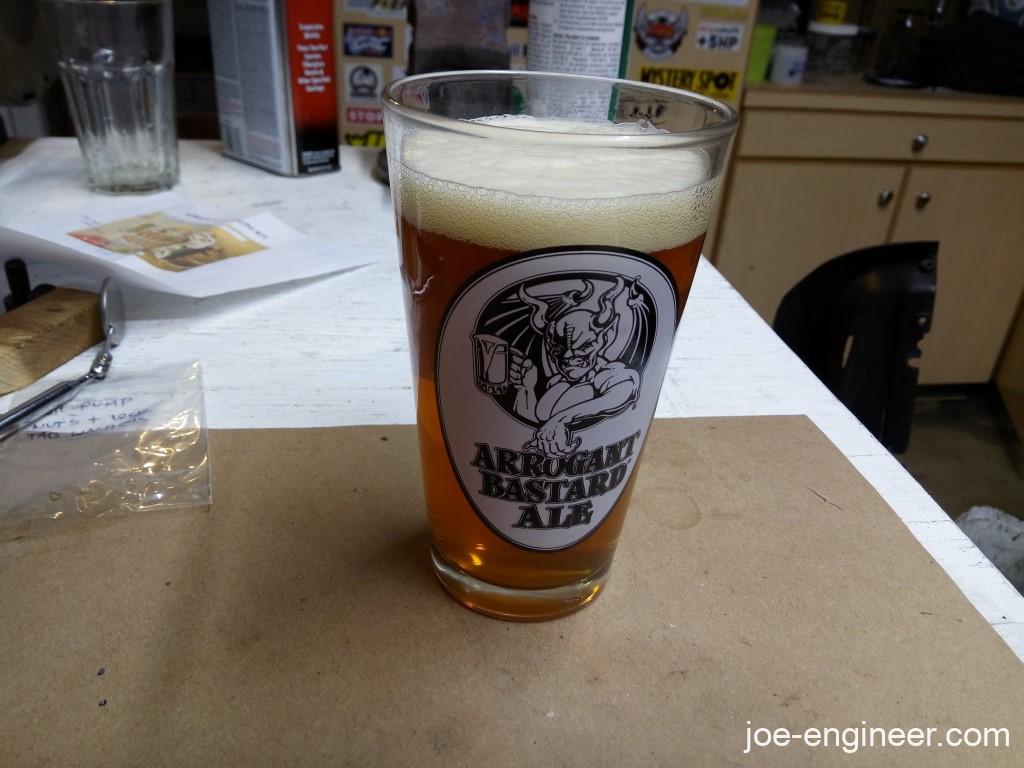
Porsche 911 Engine Case Assembly
After checking all bearing clearances between the case and crank, laying out all the internal components and adhesives, and capturing everything on a set of master work instructions, I was finally ready to rock with case assembly.
Final Tools and Parts Check
After some research on the Pelican Parts forums I was able to make a set of connecting rod and timing chain holder tools with sheet metal, snips, and pop rivets. These support 3 rods and 1 timing chain vertically so I can free up my hands to join the case halves together.
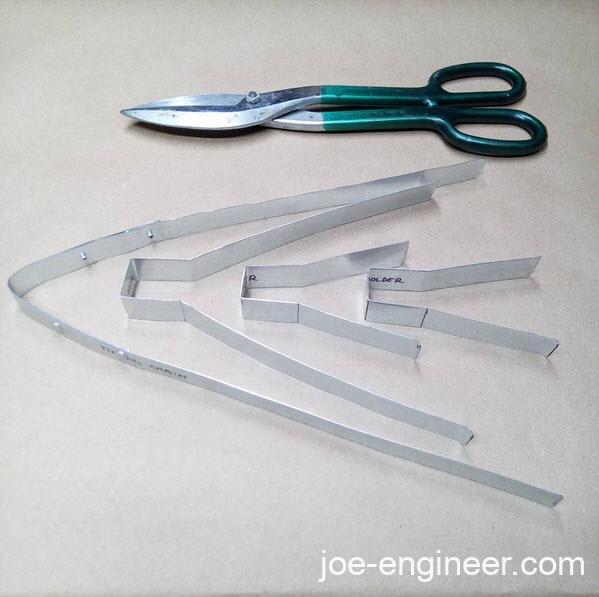
I didn’t discuss the oil pump previously, but since the engine was in good condition internally and had not suffered a catastrophic failure of any kind, it was a common practice to simply give it a good cleaning and re-use it as-is.
There was one last check to do before final assembling everything in the case and this was the crank and intermediate shaft gear backlash. This was checked by feel by rocking the gears back and forth and feeling the “click” between them. You are supposed to feel a click, but not a very big one. Leaning on my machine shop experience I concluded that the ever so slight click my fingertips felt indicated a backlash well within spec. Time to put stuff together.
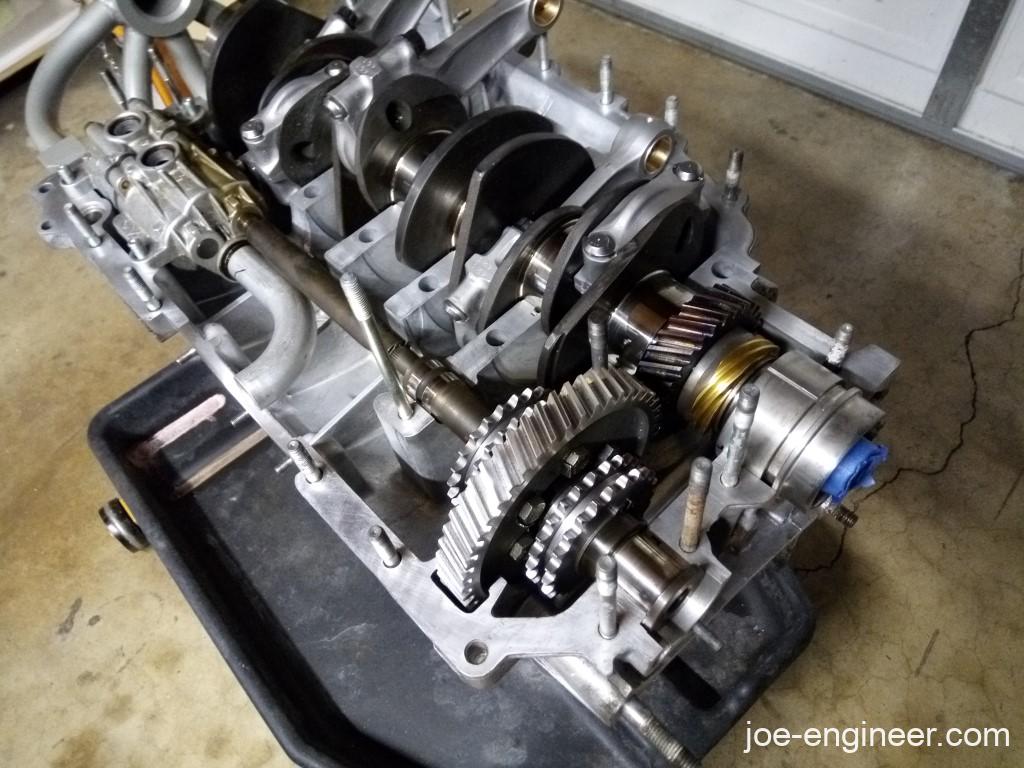
Final Assembly
Ideally this kind of assembly should be done in a cleanroom. Since I did not have this kind of facility I vacuumed the garage the day before and performed a final case cleaning the day of. The assembly was done at night, with doors closed, and phone off to minimize interruptions. 😉
Next I lubed all the main and intermediate shaft bearings. Then I installed the intermediate shaft with timing chains, the oil pump and seal, and their drive shaft shaft connecting the two.
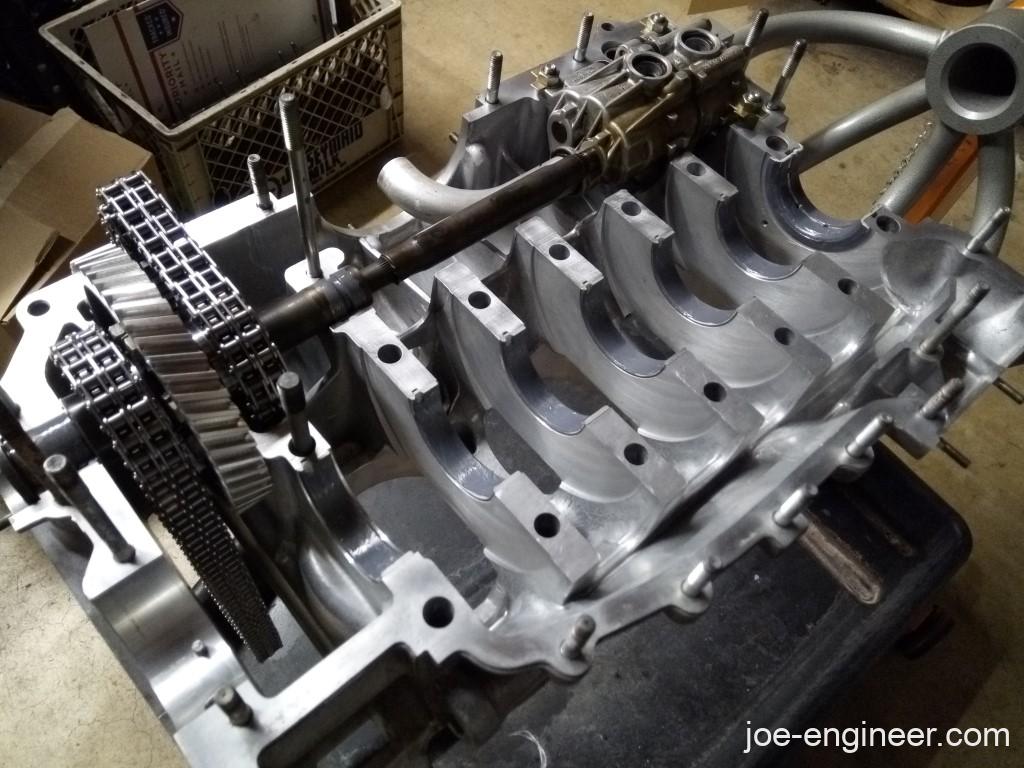
There is an oil pump seal underneath the pump that I forgot to photograph, but its in there. The pump mounting nuts were torqued and lock tabbed into place.
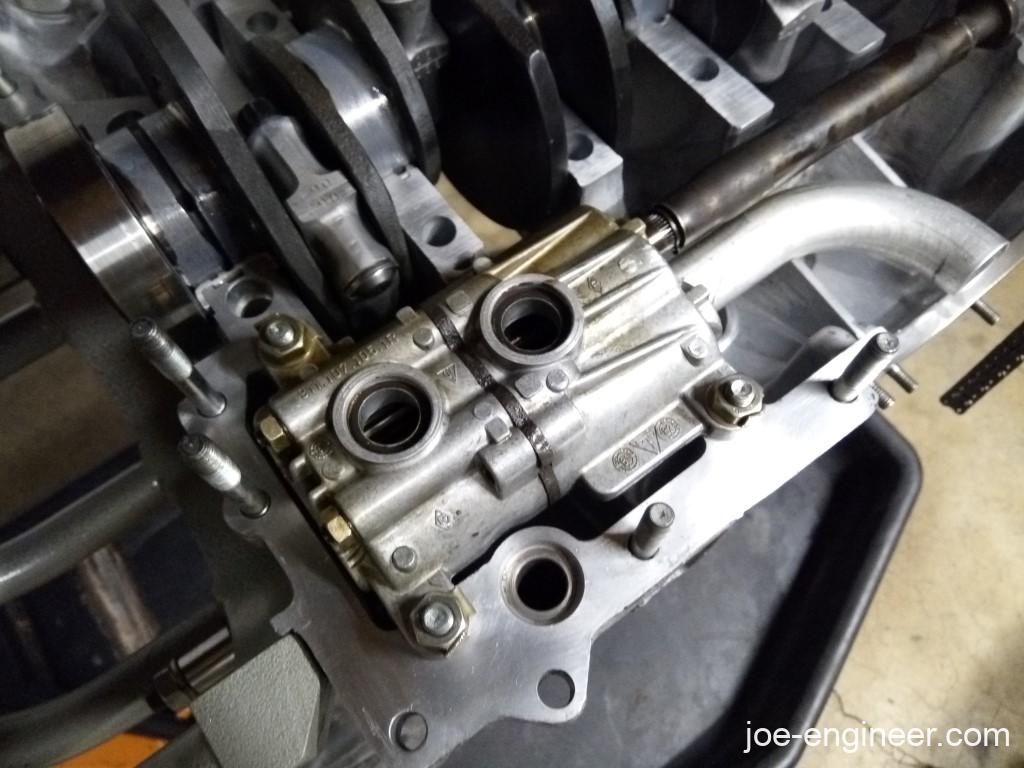
Next up was the #8 bearing and the crank and rods assembly. After checking my old #8 bearing and finding it in good shape I decided to re-use it. There is some controversy over doing this but, per some folks more experienced than I, the bearing receives very little wear. It is very expensive so since this one passed the fit check I decided to stick with it. I cleaned it up and put a new crank seal and outer o-ring on it.
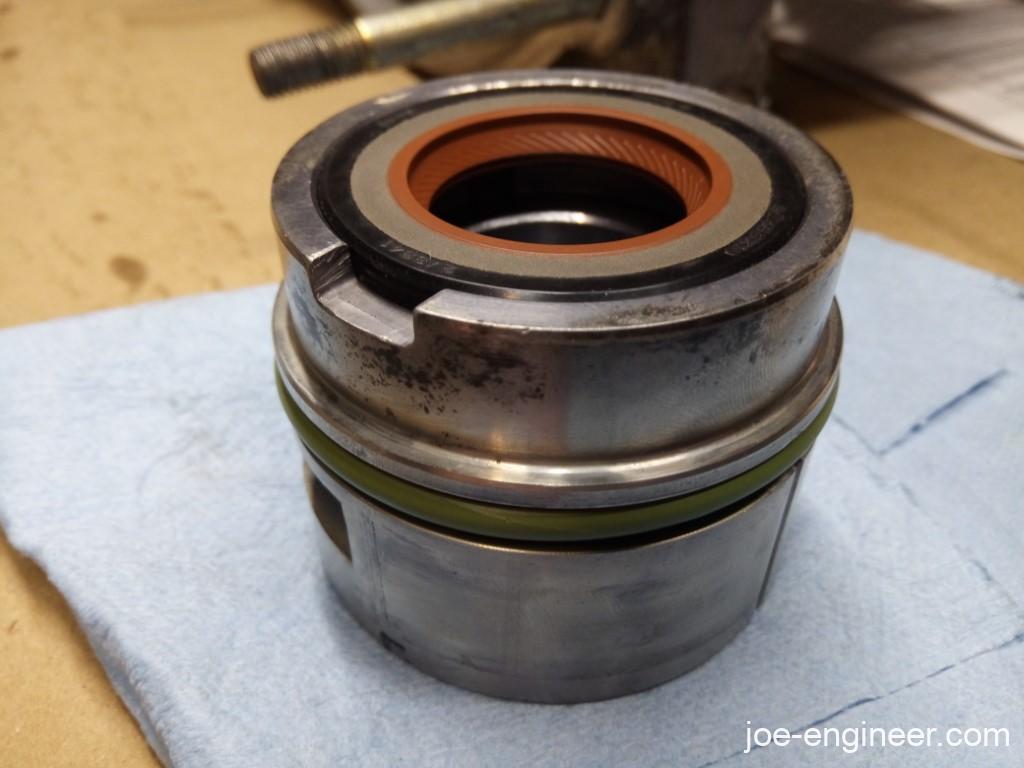
I lubed the nose of the crank and slipped the #8 bearing on. Then it was time to smear on all the different case adhesives and start the clock. At the time of this writing, this was the latest and greatest stuff to use.
- Assembly lube for the main and intermediate shaft bearings
- Engine oil for the oil pump internals
- Threebond 1211 for the #8 case bearing saddle and bearing o-ring
- Threebond 1184 for the outer case perimeter
- Loctite 574 for the main bearing webs
- Dow Corning 55 for the case thru-bolt o-rings
You can see in the photo below that there are a lot of different surfaces and that without clear instructions it is very easy to put glue on the main bearings and assembly lube on the outside of the case, among other things. The limiting factor was the 1184; that stuff tacks in 12 minutes!
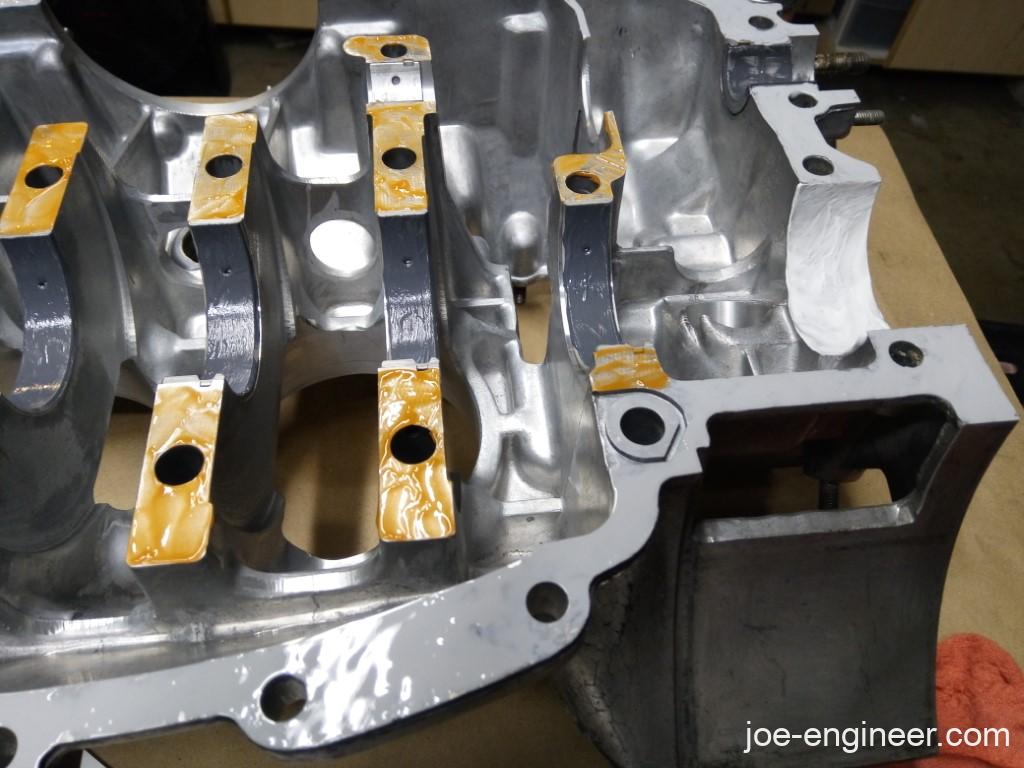
So with no time to waste, I laid down the correct goos and muscled the crank and rods into the right case half. My rod holders worked like a charm but my chain holder was a bit short. I did not panic and kept going.
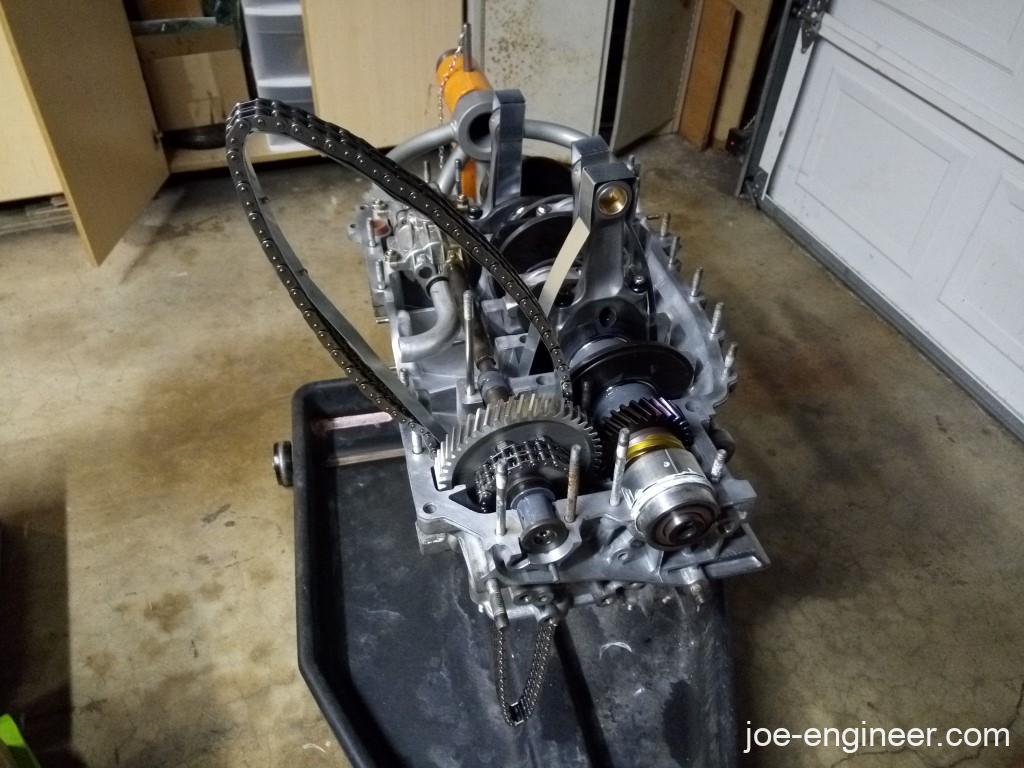
I put in the oil pump seals and kissed the engine bottom end goodbye.
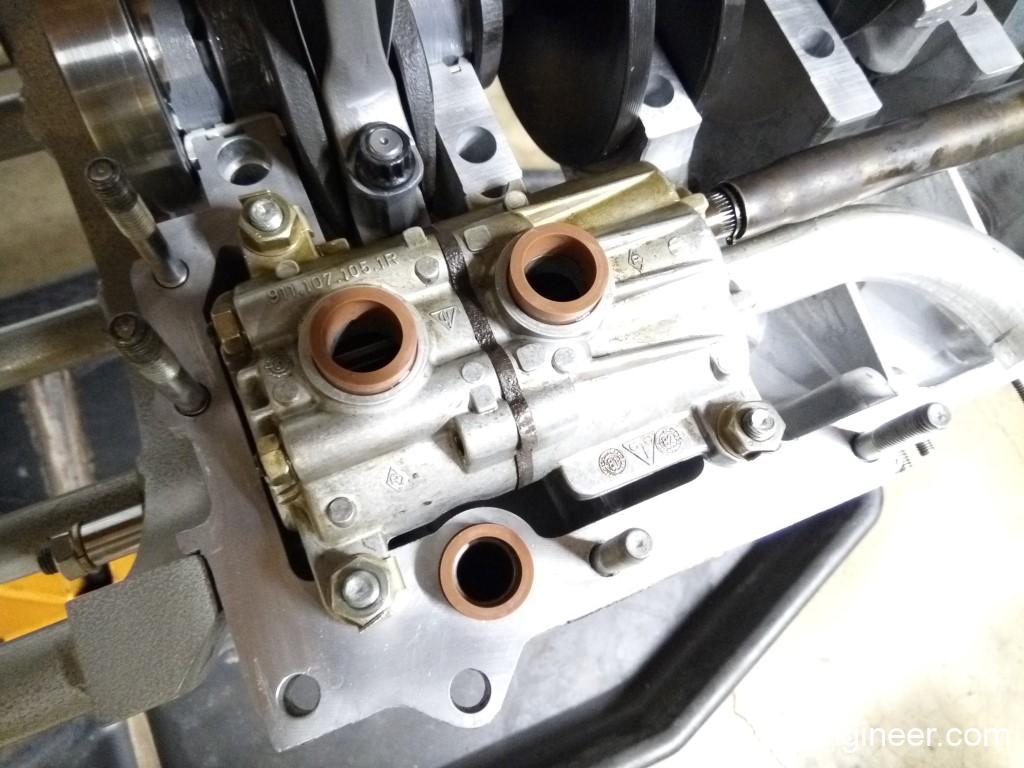
I worked quickly and calmly to fish the timing chain and rods through the left case half with all the glues. I seated the case halves and got cracking on the case through bolts and nuts. I pre-wrote the torque sequence numbers on the case next to each bolt hole in pencil to help me get through torquing quickly and accurately. The practice runs did not hurt either. I ended up installing the bolts from left to right instead of right to left (how it originally came) because it was easy to drop them in from the top half I had just mated, but it doesn’t really make a difference. When everything was torqued this is what I ended up with. A nice clean 911 shortblock.
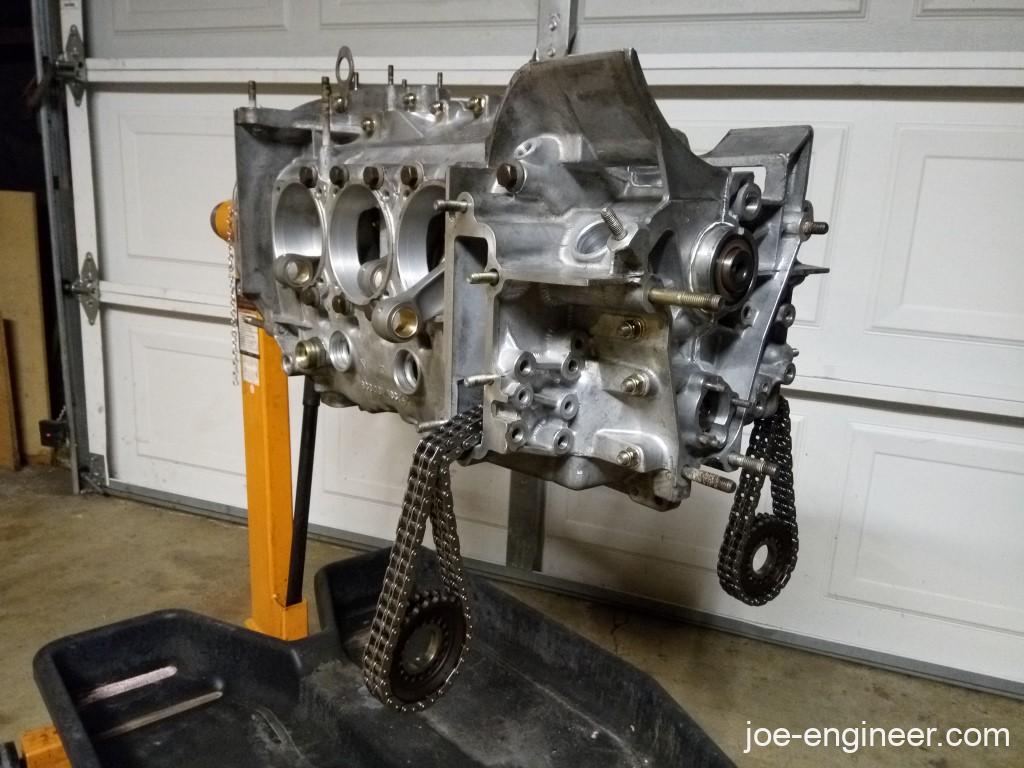
My instructions worked like a charm. I simply worked through them and checked off each step as I went along and before I knew it I was done. Best of all, if I second guess my work I could always go back and verify if I did actually put that one critical part where it needed to go.
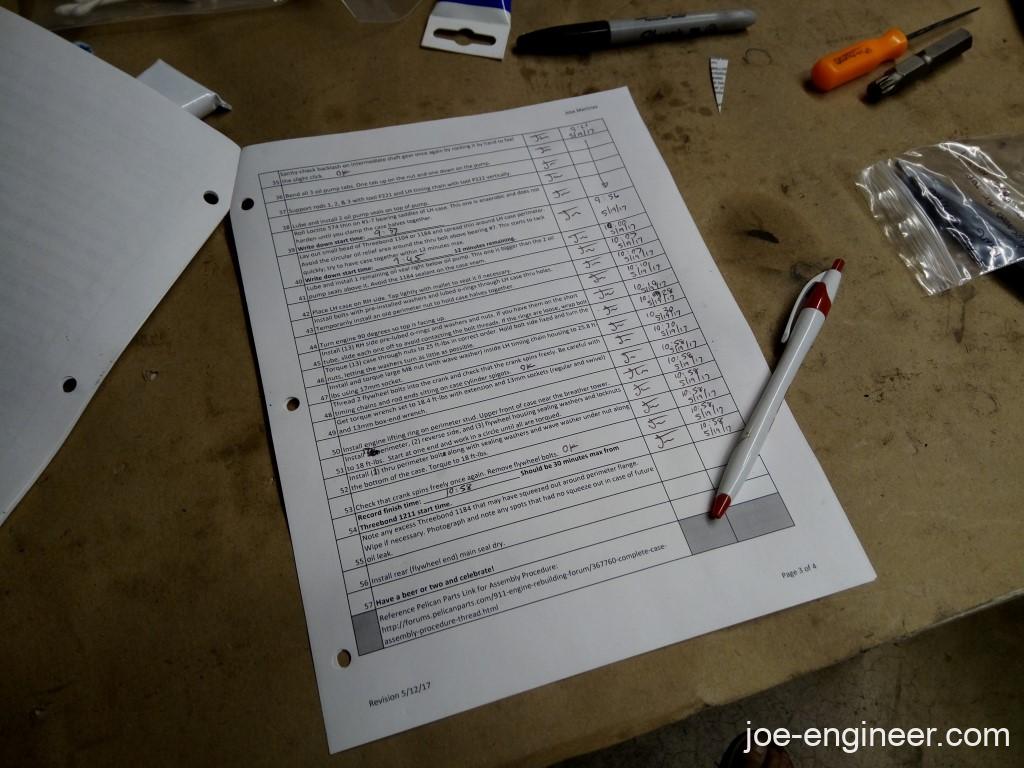
It was then that I could follow that last step in the instructions.
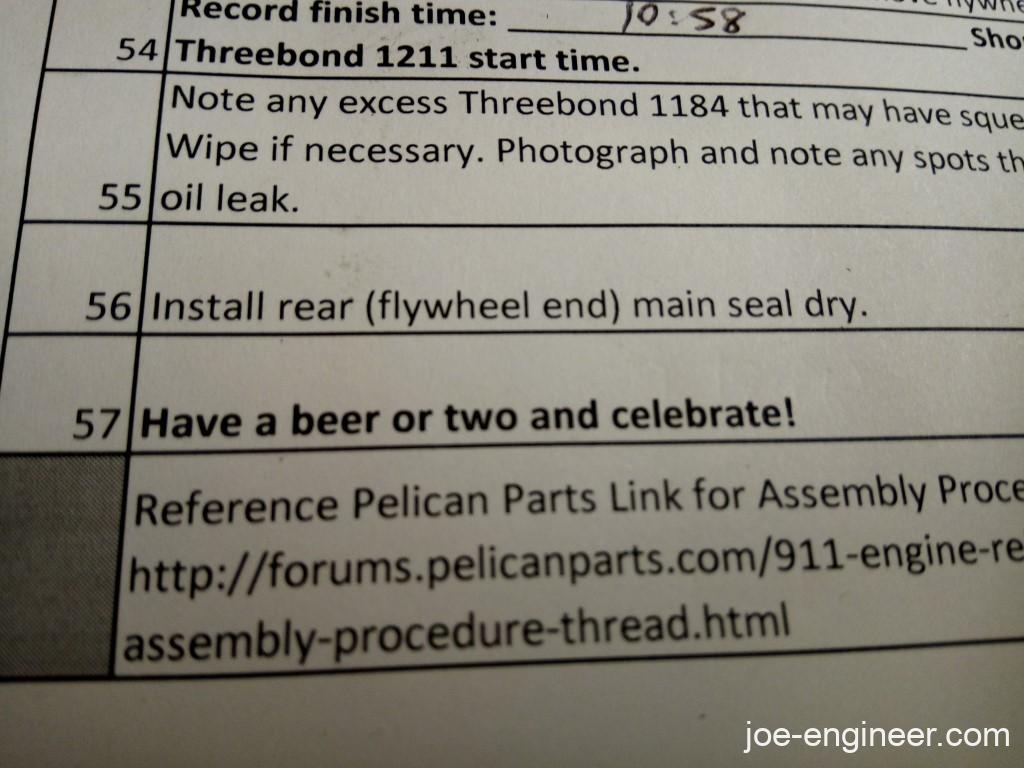
So I gladly obliged.
